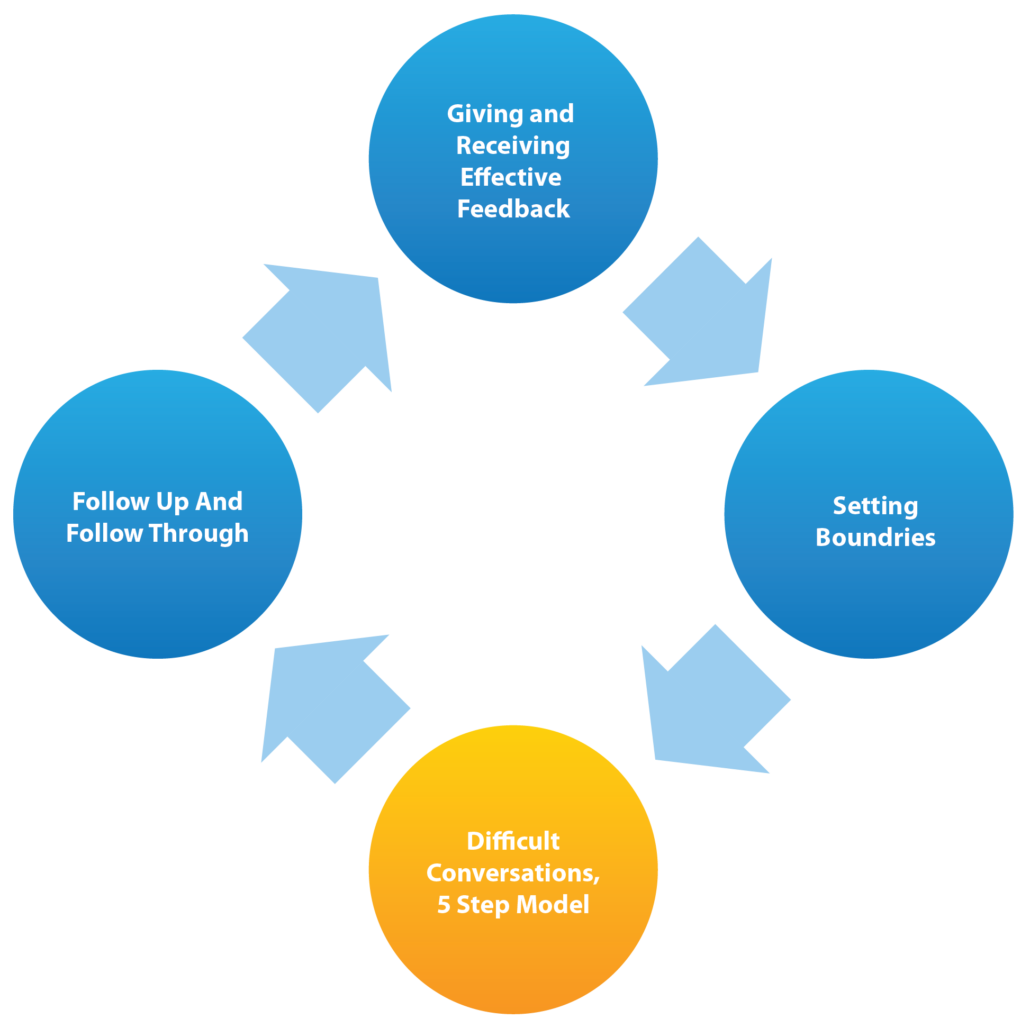Getting people to do what you need them to do can require difficult conversations, and showing up to those conversation could just be one more stress that you really wish you didn’t have to deal with; especially now in a global pandemic where we’re navigating such a perfect storm of change, uncertainty and fear.
In the past few weeks, I’ve shared a 4-step approach to dealing with difficult behavior to help managers and supervisors understand what employees want and need most. I mentioned that the steps in the cycle can be entered at any point but all of them should be completed:
Steps:
- Giving and Receiving Effective Feedback
- Setting Boundaries
- Difficult Conversations, 5 Step model
- Follow Up and Follow Through
This Leadership Tip will help you set and approach those difficult conversations with a 5 step guide. I learned it from Tammy Dunnett from Sherwood Park, AB and it’s written into my upcoming book Workplace Sandbox Strategies.
- Issue – Decide if the issue is worth addressing or not.
- Intention – What is your intention or goal for the conversation?
- Why does it matter? – Get to your WHY. Why does it matter to you?
- What could happen if it doesn’t go as planned? – Be aware of the worst-case scenario.
- Write your opening – Use “I” statements and state factual behaviour.
Having those difficult conversations are about as important as having rumble strips on our highways to keep your team moving in the right direction, fast, without causing collisions and collateral damage. If you’re a leader, you’re the rumble strip. Deal with things immediately to prevent collisions. Those you lead expect you to enforce the boundaries.
They’re called difficult conversations because they require us to be uncomfortable. Give it a try, and remember that the only way through conflict, is through it, and if you can’t find your way, call Penny Tremblay because the high cost of conflict is avoidable, and profits can be used for better things.




